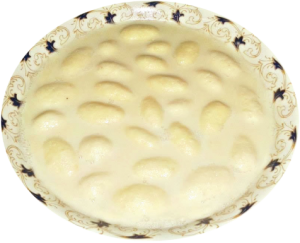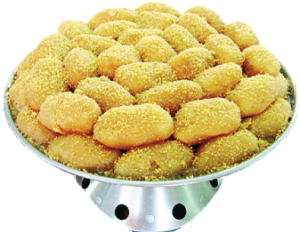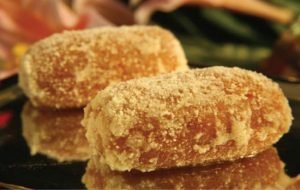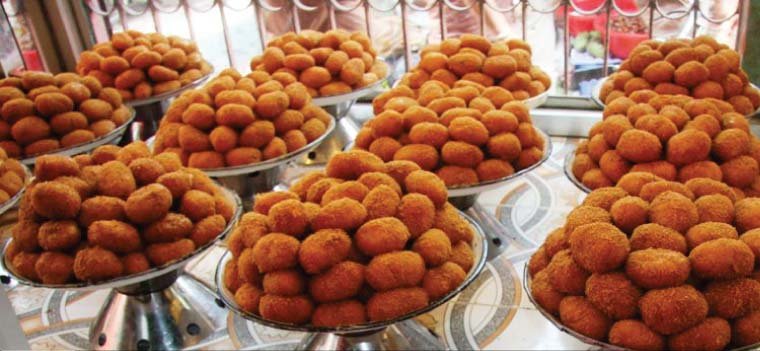.jpg)
)Since ancient times, the sweet formation was introduced in Bangladesh. It is found in the travel tour of foreign tourists. It is not only a food item but also as a cultural expression, it is a far-reaching influence on its far-reaching influence, which is called Munda, sweetie, sweet. Sweet is essential in our family and social life. A celebration of celebration, marriage and socialism are all about the celebration of this sweets. Sweets are so integral to the cost of examinations, improvement in the job, the arrival of new family members or the marriage of the girl. To make the big head of the office happy, to win someone's mind, sweet is a mystery. It is such an inexplicable material that we can smile on our faces. This plea is a pleasant touch, to be involved in anything and to stir our faces. Just as we say in Bengali 'sweet face'
There are many types of sweets in Bangladesh. Sweets were once sold in clay pots or kalapata. We ate sweets sweetly at the Padmapati or banana leaf shops. Today is the memories. Today being exported to sweet abroad And sweet sells are colored boxes in lovely containers. In fact, the sweetness of Bangladesh has spread all over the world today. Its popularity is region-based, but it has no written history. Such as Muktagachara Manda, Chorcham of Pirabari, Rasmalai of Comilla etc.
Traditional and legendary sweets of this country are included in Comilla's Rasmlaai, Kushtia Matka, Pirabari Chancham, Brahmanbaria's Chana Mukhy, Faridpur's Gannada and Muktagachara Manda. We will try to highlight the history of these sweets and the evolutionary history here.
Remembrance of Comilla

Ghosh community of Tripura Raja, the original inventor of Rasmalai of Comilla. In the early nineteenth century, they provided sweets according to order at different family or social events. At that time, there was a litter of molyakira laced with lasagalaa. Later on, milk was made of latex and it was made to immerse the rosemary of rosemary. In the thirties, the size of this rasolula began to be squeezed into the milk curves and it was named Rasmalai.
Kushtia Matka:

At Kumarkhali, Nitaiapala first started making a matka. Another sweet made of sugar syrup is known as Kushtia's Khwaja. In the winter season, this potato is very tasty with new paddy murias.
Charming:
The name of a village near Tangail is Pirabarhi. The name of this place is associated with the name of the sweet name, Chacham. This sweet made famous to Burabari. Today, about 150 years ago, the Gaur community of India came to Godabari near Tangail. The sweetness that they started making a mixture of chana and molasses is the name of the pomp As far as possible, by throwing water out of the kidneys and then making it sweet, it is made of red in deep sour cream. This sweet is found in different areas of Bangladesh including Tangail city.
Chanmukhi of Brahmanbaria:
A traditional sweet confectionery of Bangladesh is a delightful savor of Brahmanbaria. In the beginning of the nineteenth century, this festival was started by Ghosh in Brahmanbaria. At first, it was very big like a cake. A snack cut was eaten in many ways. Presently it has come to be smaller than usual. Although it was previously served in Padma and Kalapata. Nowadays, packets are used in this service and in Brahmanbaria, Comilla is available everywhere throughout the country.
Faridpur's grainy sweet:
In the traditional sweets of Bangladesh, a ganadar sweet of Faridpur, a carpenter named Laksan Ghosh, started making this sweet in Faridpur's Danga thana. Looks like sweet and sweet gourd made from chana and sugar, like Scottish. This sweet is available only in Faridpur district.
Muktagachara Manda:

Among the traditional confectionery of Bangladesh, Muktagachha Mondara is the top of the position. Gopal Pal's famous Mondar Shop is in Muktagacha of Mymensingh district. Gopal Pal introduced this sweep. Under the patronage of the zamindars of Muktagachha, the popularity of this sweet fame has gained fame abroad even beyond the limits of the country. The ancient ancient township Muktagacha of the district of Miman Singh. The present Muktagakha police station was known as Alapsing Pargana. Sri Krishna Acharya Chowdhury, the founder and founder of Muktagacha Raj family and the dumdas, received the grace of Nawab Murshid Quli Khar in 1704. Immediately after the Battle of Palashi, in the year 1760, Ram Rama Hare Rama, four sons of Srikrishna Acharya Chowdhury, started living locally in Muktagacha, an estate of Vishnuram and Sivaram alpasing pargana. Their ancestors were residents of Bogra. It is said that while coming to this area with Srikrishna Acharya Chowdhury zamindarabha, a poor praja of Muktaram Karmakar, congratulated him with a large lump of brass. The king is happy, once the name of the area, Muktagacha named after this area, with the consent of the trees given by the name of Binodbari Mukarram. In the town of Muktagacha, the famous shop of Gopal Pal is located. Mandala was born in the hands of Gopal Pal from Murshidabad in the early eighteenth century. It is mainly made from the mixture of chana and sugar, it is sweet.
There is a wooden statue of Ram Gopal Pal in this mandir which is kept in wooden show-cases. Presently, the 5th generation of Gopal Pala Rajendranath Pala has been running the confectionery business. This business was followed by its ancestors Ravinath Pal, Kedarnath Pal and Dwarkanath Pal Gopal Pal. At present, Ramendranatha Pala century old Manda tradition is bound to hold.
The zamindars of Muktagachara were very culturally. It is known that Gopal Pal first made Manda in 1824. He presented Marma Suryakanta Acharya Chowdhury with Manda. Inspired by the taste of Manda, he introduced Manda at the landlord house and breakfast on breakfast. The zamindar used to serve as a Manda palace in the worship of the family. Not only this, zamindars of the British rulers used to send Manda as a supplement. This Manda became a matter of pride and tradition.
According to the local people, after the fall of Siraj -uddaula in Palashi, Sivaram Pal and father Ram Ram Pal, after the fall of Gopal Pal, started living permanently in Murshidabad, Rajshahi and later Muktagachha. Gopal Pali opened the Mondar shop with the help of local zamindars and started business in 1824. This palanquin family has been running this confectionery business for 180 years. Previously Manda was served on Padma Pata. This reporter has the experience of eating pudding on Ram Padma in Gopal Palla Mandir Shop, which is a happy memorial. Then the size of Manda was very large.
If social, cultural or political personality of this sub-continent had come to Muktagachha, he would be entertained with candida. Among them was famous sitar player Ustad Alauddin Khan, famous doctor Dr. After Bishan Chandra Roy, who was the minister of the West Bengal government, there was also Netaji Subhash Chandra Bose. Shashikanta Acharya Maharaja, son of Suryakanta, was also a devotee of Mandara. It is known that Shashi Kant had sent Joseph Stalin to Manda subcontinent in the former Modiyat Union. He was also impressed with the wonderful taste of Manda and he also sent testimonials.
Manda was very fond of former Pakistani President Ayub Khan. The then East Pakistan Governor Munem Khan often sent him to Manda. Maulana Bhasani sent Chinese leader Mao-tong-Tungka to Manda. He was also a devotee of Mandara.
At present, five brothers Ramendranath Pal, Rabindranath Pal, Rathindranath Pal, Shishir Kumar Pal and Mihir Kumar Pal are continuing the business of this Manda. According to them, Manda is not a business, it is the tradition of the country. They are bound to uphold this Mandya trade and culture.
We believe Muktaagachara Manda speaks the glory of the country, the tradition of the country, history here.
[Misty-01.jpg](
its a delicius one, orait?